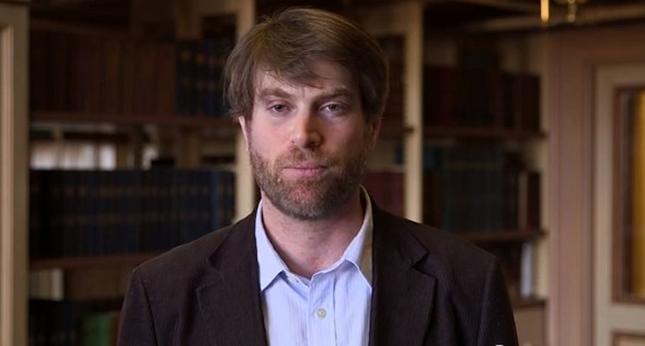Georgetown Professor Speaks About University’s History With Slavery
By • April 22, 2016 0 3813

Dr. Adam Rothman, a member of Georgetown University’s Working Group on Slavery, Memory & Reconciliation, spoke in Lauinger Library today, April 18, about the university’s history in connection with the Jesuits’ sale of 272 slaves in 1838.
“It seems to me that the story of Georgetown and slavery is a microcosm of the whole history of slavery,” he said.
The discussion, scheduled in honor of D.C. Emancipation Day, comes on the heels of a front-page story in Sunday’s New York Times detailing Georgetown University’s history with slavery and asked what, if anything, should be done for the descendants of those slaves, sold at the initiative of President Rev. Thomas Mulledy, S.J.
Rothman, an associate professor of history at Georgetown, spoke about documents found in the university archives that document the transaction that sent 272 slaves from the Jesuits’ Maryland plantation to former Louisiana governor (later U.S. Congressman) Henry Johnson and his associate Jesse Beatty.
Entries from 1813 and 1814 in the diary of Rev. John McElroy, S.J., offer insight into the connections the Jesuits had with slavery, and the articles of agreement between Mulledy and Johnson and Beatty detail the terms of the sale: $115,000 to be paid in a series of installments. Rothman estimated that in today’s dollars the amount would be equivalent to, conservatively, $3 million.
“Humans were transformed into commodities,” he said.
Rothman highlighted another document, an 1848 letter from James Van de Velde, S.J., of St. Louis, who inquired into the circumstances of the slaves who were sold. Van de Velde found that their families had been separated and that they had not been given ample opportunity to practice their religion, violations of the terms in the articles of agreement.
Rothman pointed out that while these documents are vitally important to the understanding of Georgetown’s involvement in slavery, they only tell one side of the story.
“What we so often lack is the perspective of enslaved people themselves,” he said.
At the end of the talk, a man named Joe Brown spoke up from near the back of the room. He said that his ancestors had been slaves whose lives followed a similar trajectory at the hands of the Catholic Church in Maryland. Coincidentally, he had been at the library researching his family history at the same time as the discussion.
Brown shared his story of being raised in the Catholic Church and then coming to understand how the church had been part of his family history in a terrible way. He spoke quietly and emotionally about his new doubts and whether he could still have faith and raise his children in the Church.
His comments made Rothman’s earlier remarks about looking at slavery in its local context, in order to humanize a difficult subject, very real to the listeners. When Brown’s story was followed by another attendee’s question about reconciliation, Rothman himself was overcome with emotion and could not answer.
Rothman later said that the first step of truth and reconciliation is truth. He spoke of the possibility of scholarship programs and memorials on campus, while noting that conversation is ongoing and no decisions have yet been made.
“My own personal opinion is that nothing is sufficient,” he said.

